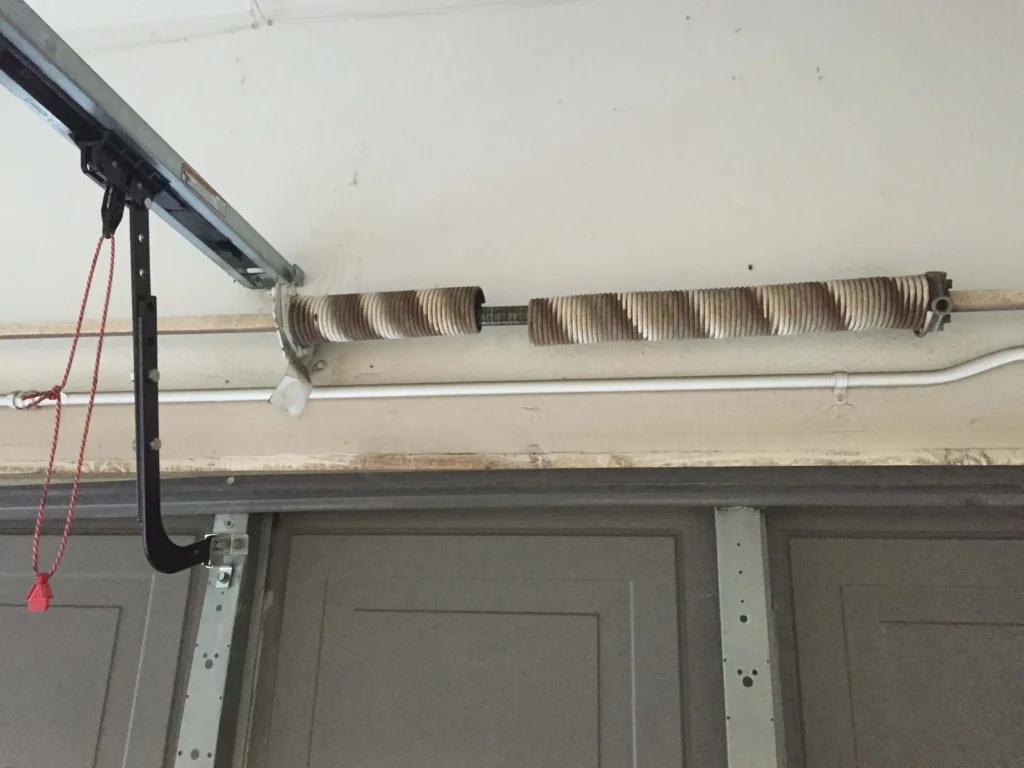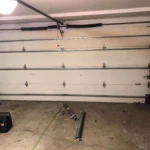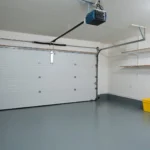A heavy garage door that isn’t properly balanced can lead to many issues, from difficulty opening to potential safety hazards. Balancing your garage door with the right springs and tracks ensures smooth operation and prolongs the life of your door. Here’s a detailed guide to help you understand the importance of balance and how to achieve it.

Content
1. Why Balance Matters
Garage doors are heavy, often weighing several hundred pounds. Proper balance ensures that the door can be easily lifted manually or by an automatic opener. When a garage door is unbalanced, it can cause:
- Strain on the Opener: An unbalanced door puts extra stress on the garage door opener, leading to premature wear and potential failure.
- Safety Risks: A door that is too heavy to lift easily or that closes too quickly can be dangerous, especially for children or pets.
- Increased Wear and Tear: Misalignment can cause parts to wear out faster, leading to more frequent repairs and higher costs.
2. Understanding Garage Door Springs
Springs play a crucial role in balancing your garage door. There are two main types:
- Torsion Springs: Located above the door, these springs twist to create tension, counterbalancing the door’s weight.
- Extension Springs: Positioned along the sides of the door, these stretch to provide the necessary counterbalance.
Both types require proper adjustment to ensure your door is balanced. Springs can be dangerous to work with, so it’s often best to consult a professional.
3. Checking the Balance of Your Garage Door
Testing the balance of your garage door is relatively simple:
- Disconnect the Opener: First, disconnect the automatic opener by pulling the release cord, allowing you to operate the door manually.
- Lift the Door: Lift the door halfway and then let go. If it stays in place, the door is properly balanced. If it falls or rises, the springs need adjustment.
- Listen and Observe: As you lift and lower the door, listen for unusual noises and observe if it moves smoothly. Any resistance or jerking indicates a balance issue.
4. Adjusting the Springs and Tracks
If your door is unbalanced, adjusting the springs or tracks might be necessary:
- Torsion Spring Adjustment: This involves winding or unwinding the springs to achieve the correct tension. Due to the high tension, it’s recommended to leave this to professionals.
- Extension Spring Adjustment: These springs can be adjusted by moving the hook to different holes on the track or adjusting the cable. Again, caution is advised.
- Track Alignment: Misaligned tracks can also cause balance issues. Use a level to check the tracks and adjust them as needed. Make sure the tracks are parallel and securely fastened.
5. When to Seek Professional Help
Balancing a garage door is not always a simple DIY task, especially when dealing with heavy doors and high-tension springs. If you’re unsure or uncomfortable with the process, it’s best to seek professional assistance.
For those in need of professional services, exploring options for Garage Door Spring Repair in Williamsburg could provide the expert help you need. Proper balancing not only ensures smooth operation but also enhances safety and prolongs the life of your garage door.
Conclusion
Balancing your garage door with the right springs and tracks is essential for smooth operation, safety, and longevity. Regular checks and adjustments can prevent major issues and reduce wear and tear on your door’s components. However, due to the complexity and potential dangers involved, professional assistance is often the best course of action when dealing with unbalanced garage doors.

Safety-first is Troy’s motto. He’s your guide to a secure garage space, offering advice that puts your peace of mind front and center.









